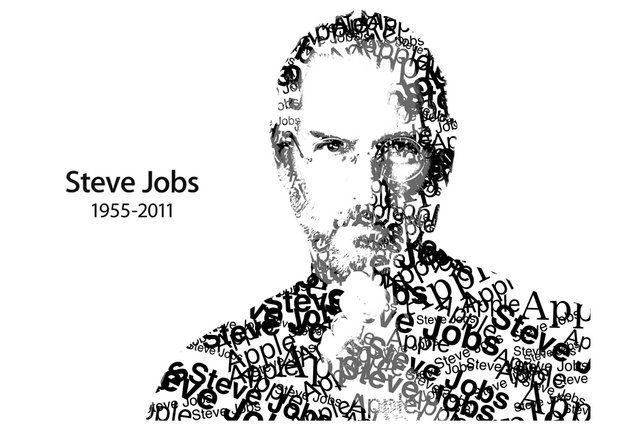The Tipping Point of Success: The Real Reason Why People Fail

AT THE TIP
What if success was at the tip of your fingers but you didn’t even realize it? You look back to all your painstaking efforts and sacrifices you made yet the results are too insignificant to justify further efforts. What do you do in a situation like this?
Given that approximately 80% of all new businesses fail within the first year it sure says something about how common 'giving up on our goals' is.
The reason why most of us fail or give up is because there is no 'progress bar' to success. We simply don't know when we will hit success and for that reason most of us give up before we reach the tip of success.
The tipping point of success is a concept that could potentially make every one of us succeed, if we understand its implications.
Historically, the tipping point is the critical moment or threshold that leads to irreversible change. This could be a developing idea, trend or behavior that finally spreads like wildfire after reaching the turning point (i.e. think about epidemics, fads, social behaviors etc.).
Scientifically, it is the point of inflection, where additional increments (of effort) lead to dramatic changes (results).
Taking this concept and applying it to our lives you can see that for most people success follows this type of trajectory.

SUCCESSFUL PEOPLE AND THEIR TIPPING POINTS
What makes successful people successful? Whether it is a movie star, an entrepreneur or a political figure, success follows a path with a tipping point.
For most successful, success wasn't an overnight type of phenomena. Instead, it was due to consistent and incremental developments that ultimately lead to their success along their path.
For instance, successful people such as Steve Jobs, Martin Luther King, and Johnny Depp are successful because they all exceeded their respective tipping points. Beyond their tipping points, it becomes incredibly effortless to obtain dramatic results.
Let’s take the example of the late Steve Jobs. Once Steve Jobs successfully established Apple, it was just a matter of bringing out consecutively innovative products that would be instantly adopted worldwide without much effort. A simplistic example however, it demonstrates the dynamics of the tipping point of success.

WHAT MAKES PEOPLE UNSUCCESSFUL?
What tends to happen is that a large majority of us give up before we hit the tipping point of success. We give up because we:
• Hit roadblocks
• Fail to see results
• Lose focus
• Are risk averse
• Have poor planning
• Have resource constraints
For whatever reason, giving up means never knowing how much further we had to go before we reached our own tipping point of success.
Essentially, we become short-sighted to our success.

SUCCESS'S PROGRESS BAR
Humans have a natural tendency to give up if we cannot see the results.
Let's use an analogy to demonstrate this. Let's say you wanted to download a very large file from the internet (a movie, game, program etc.). You decide to download this file because you think it will enrich your life somehow. The only problem is that there is no progress bar, indication of file size or even how long it will take. Given finite resources (i.e. bandwidth), once you start the download and realize there is no progress bar, would you persist or would you eventually cancel and find something clearer and certain?
As you can imagine, most people would cancel or give up on the download, simply because, there is no certainty of successfully completing the job given finite resources.
This is exactly what happens with most people in life. They have a goal (a download) they want to achieve, finite resources such as time, money, energy (bandwidth), and they don't have a clear path of exactly how to get there (progress bar).
It is clear that whenever you are attempting to achieve success, you need a progress bar of some sort to compel you to persist with your efforts. So how do you create this progress bar? You use the tipping point of success model.
THE TIPPING POINT OF SUCCESS MODEL

This model has two major implications:
• Significant effort is required to reach the tipping point without much result or success
• Beyond the tipping point, insignificant effort creates significant results/success (steep gradient)
Now, how do you use this model to your advantage?
First of all you must determine your tipping point of success. There are 2 components: Level of Success (vertical axis) and Effort (horizontal axis)
Level of Success
This is all about asking yourself what does success look like to you (realistically)? Ask yourself questions such as:
- “How would I know when I’m successful”
- "What does my first step to success look like?"
This is really a subjective exercise as everyone has different definitions of success. You can use whatever measure you'd like, what matters here is what level of success (vertical axis) you are really aiming for. Keep in mind, the tipping point of success is not an end goal, it is an indication that you are on the precipice of tremendous positive change.
Amount of Effort
After you've determined your level of success, ask yourself questions that determine the amount of effort (time, energy, money etc.) you can invest, such as:
- “Approximately how much effort do I want to invest in this goal?”
- “Approximately how long will it take to reach my desired level of success?”
- "How much am I willing to sacrifice"
These questions essentially determines how long you must travel down this path before you reach your tipping point of success.
Plotting Your Progress
Lastly, you want to estimate where you are currently, relative to your tipping point of success. If you just started, then your current point is closer to the beginning of the graph (to the left). Similarly, if you've determined you are about half way through your journey, then plot yourself in the middle.
It then becomes a matter of consistently plotting your current point with respect to your tipping point of success.
IMPORTANT POINTS
Know that in the beginning, most of your efforts will yield minimal results and you are prepared to accept that.
Keep focusing on your vision of your tipping point of success. The clearer the vision the easier it is to move towards and gauge your progress.
It is better to focus on reaching the tipping point of success than to pursue an absolute end goal. This is an advantage since, often our expectations of success and our realities are mismatched. By aiming for a point of inflection or point of change (the birth of success) there is motivation to continue beyond, rather than to stagnate after completion.

SUCCESS NEEDS A PROGRESS BAR
Of course success isn't as simplistic as this, there are always going to be setbacks in your path to meteoric success, however, this model gives you a simple "progress bar" to gauge and hence motivate you to keep going. After all, without a progress bar of some sort, most people will just give up before realizing just how close they were to success.
The tipping point of success model is an extremely powerful yet simple way to determine where you are on your path. It is essentially your map to success and will serve to motivate you when are on the brink of giving up.
Any questions and comments please feel free to leave them below!
Peace~
PHOTO SOURCES
Pexels.com
Photo by Joshua Earle on Unsplash
Photo by Bryan Minear on Unsplash
Photo credit: René Clausen Nielsen via VisualHunt.com / CC BY-SA
I skimmed over this and looks great! I am going to come back and read this later when i have some free time
Thanks @radicalbradical - It's a very simple concept that has powerful implications :)
Congratulations @heroes-institute! You have completed some achievement on Steemit and have been rewarded with new badge(s) :
Click on any badge to view your own Board of Honor on SteemitBoard.
For more information about SteemitBoard, click here
If you no longer want to receive notifications, reply to this comment with the word
STOPWhat a well written and inspiring post. Keep it up.
Thanks @gouch - I appreciate the encouragement :)
I hope you got something out of it!